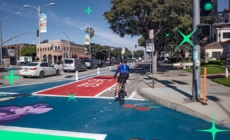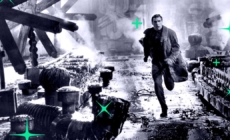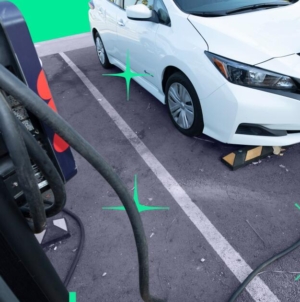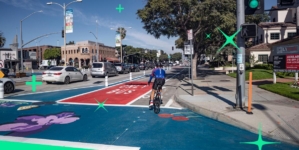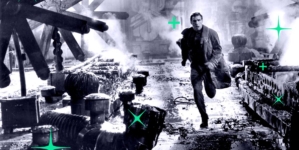-
Titans QB Cam Ward Understood The Assignment In Preseason Debut - 8 mins ago
-
Chad Michael Murray nearly died at 15 from twisted intestines emergency - 11 mins ago
-
Commentary: The state sets lofty goals in the name of a brighter future. What’s a vision and what’s a hallucination? - 37 mins ago
-
NFL Preseason Betting Odds, Picks For Dolphins-Bears, Saints-Chargers - 44 mins ago
-
Which 10 Players Have The Most Single-Game Rushing Yards in FBS History? - 53 mins ago
-
How might you reconfigure L.A. so it’s a sustainable home for everyone? - about 1 hour ago
-
DraftKings Promo Code: Get $200 Bonus For Sunday MLB, NFL Preseason Games - about 1 hour ago
-
Jaguars’ Cam Little Makes Unofficial NFL Record 70-Yard Field Goal vs. Steelers - 2 hours ago
-
Hollywood takes a wrecking ball to Los Angeles - 2 hours ago
-
Mets Legend Named Option for Yankees to Replace Aaron Boone - 2 hours ago
California’s wildfire moonshot: How new technology will defeat advancing flames
A bolt of lightning strikes deep inside a California forest in the middle of the night.
The spark becomes a flame, and within seconds, a satellite dish swirling overhead picks up on the anomaly and triggers an alarm. An autonomous helicopter takes flight and zooms toward the fire, using sensors to locate the blaze and artificial intelligence to generate a plan of attack. It measures the wind speed and fire movement, communicating constantly with the unmanned helicopter behind it, and the one behind that.
Los Angeles knows how to weather a crisis — or two or three. Angelenos are tapping into that resilience, striving to build a city for everyone.
Once over the site, it drops a load of water and soon the flames are smoldering. Without deploying a single human, the fire never grows larger than 10 square feet.
This is the future of firefighting.

Members of Cal Fire, various fire agencies and tech companies learn about an autonomous Black Hawk helicopter, part of new California wildfire fighting technology, at the Silverwood Welcome Center on April 25 in Hesperia.
On a recent morning in San Bernardino, state and local fire experts gathered for a demonstration of the early iterations of this new reality. An autonomous Sikorski Black Hawk helicopter, powered by technology from Lockheed Martin and a California-based software company called Rain, is on display on the tarmac of a logistics airport in Victorville — the word “EXPERIMENTAL” painted on its military green-black door.
It’s one of many new tools on the front lines of firefighting technology, which experts say is evolving rapidly as private industry and government agencies come face-to-face with a worsening global climate crisis. For many attendees, the trauma of January’s firestorm in the Altadena and Pacific Palisades neighborhoods of Los Angeles remains top of mind.
“The dream is the evolution of this,” said Maxwell Brodie, Rain’s chief executive. “The dream is to be able to live in your neighborhood knowing that there is protection from catastrophic high-intensity fire, and to feel safe. And I think that if we look hard at what is likely coming over the decades ahead, there’s no time to waste.”
Indeed, the outlook for wildfire activity in the years and decades to come is concerning. Scientific studies and climate research models have found that the number of extreme fires could increase by as much as 30% globally by 2050. By 2100, California alone could see a 50% increase in wildfire frequency and a 77% increase in average annual acres burned, according to the state’s most recent climate report.
That’s largely because human-caused climate change is driving up temperatures and drying out the landscape, priming it to burn, according to Kate Dargan Marquis, a senior advisor with the Gordon and Betty Moore Foundation who served as California’s state fire marshal from 2007 to 2010.

One of the sensors on the autonomous Black Hawk helicopter.
“It’s not really a controversial issue: Fires are going to increase in size, intensity and frequency across the western United States — probably globally in large measure — and it’s because the atmosphere is getting hotter and drier,” Dargan Marquis said. “That means the problem statement of wildfire is growing in front of us. The systems that we have built today, the communities that we have built today, the policies of today and the technologies of today are not going to serve us tomorrow. So we have to ramp up on all of those.”
It wasn’t all that long ago that firefighters were using paper maps and bag phones to navigate and respond to wildfires. Today, more than 1,100 mountaintop cameras positioned across California are already using artificial intelligence to scan the landscape for the first sign of flames and prompt crews to spring into action. NASA’s Earth-observing satellites are studying landscape conditions to help better predict fires before they ignite, while a new global satellite constellation recently launched by Google is helping to detect fires faster than ever before.
Much of the innovation is coming from Southern California, according to Dan Munsey, chief of the San Bernardino County Fire Protection District who also chairs the technology committee of the International Fire Chiefs Assn.
The goal, Munsey said, is to advance technology so that 95% of the state’s fires can be limited to 10 square feet or less. It’s something he likened to the moonshot — President Kennedy’s goal of landing on the moon by the end of the 1960s.
“We need to be bold with our vision in order to get to that new state,” Munsey said. “People look at it and say you’re crazy, but you need a little bit of craziness because we’re going to keep on burning down the Palisades and Altadena. We need to change the way we’re doing business.”
Such changes must include a top-down reconsideration of infrastructure, budgets and training, he said, which should occur in conjunction with the launch of satellite dishes, autonomous helicopters and drones, AI-powered cameras and other new tools.

Chief Dan Munsey of the San Bernardino County Fire Protection District discusses the importance of advancing wildfire technology in April.
“The only effective way to keep our communities safe is to embrace technology and innovation,” Munsey said.
As advanced as they may seem, the current tools are only scratching the surface of what’s possible, according to Kirk McKinzie, a 35-year fire service veteran who studies and consults on fire service technologies.
Think augmented reality helmets that will allow firefighters to create a 3-D image of a burning building in real time — including mapping exits, locating people in need of assistance and alerting crews ahead of a smoke explosion or structure collapse with time to spare.
Smart fire trucks outfitted with sensors, cameras and radars will allow teams to get to blazes faster, and smart nozzles will monitor the flow of their hoses and alert in advance of water supply issues. Firefighters, too, will don uniforms with intelligent fabrics that will allow commanders to monitor their heart rates and other physiology metrics to spot a crew member in distress.
Such tools won’t come cheap. Cost estimates for future technology are speculative and difficult to come by — its hard to say, for example, what a smart fire truck will cost in 2050 — but AI-powered rigs and autonomous helicopters will probably run fire departments millions of dollars.
But the real savings will come from prevented fires, McKinzie said. The estimated damage from L.A.’s firestorm alone is more than $250 billion.
Although these tools and solutions are not yet pervasive in the industry, there is growing acceptance that they must be considered, McKinzie and others say. “The question is, how do we get there, with due digital safeguards, yet swiftly?”
He painted a picture of Los Angeles as a smart city — in which electric fire and EMT aircraft zip across the sky, utility grids detect ignition sources instantly, and houses can even douse themselves in fire retardant or gel ahead of advancing flames. Robots, too, will be used to fight fire in high-risk situations — as was already done in 2019 when a firefighting robot named Colossus, developed by the firm Shark Robotics, battled flames searing through Notre-Dame Cathedral in Paris.
Indeed, much of this technology is already in development or in existence from companies such as Verizon and AT&T and technology firms such as Pivotal, ERIS, Magic Leap, Qwake and FLAIM, which are pioneering personal response aircraft, augmented reality software, heads-up displays and thermal imaging devices, among other smart tools for firefighters.

A fire bucket is dragged to an autonomous Black Hawk helicopter.
One project in development from the Department of Homeland Security and NASA’s Jet Propulsion Laboratory is known as AUDREY, or the Assistant for Understanding Data through Reasoning, Extraction and Synthesis, which will use AI to track fire crews as they move through an environment using head-mounted displays or mobile devices, collecting data to guide them through flames and monitor for danger.
“I’d like to think that the industry can take a step forward with technology,” McKinzie said. “Whether that is an expanded early response, whether it’s an early notification to citizens to preserve property and life, or an intelligent grid to inform infrastructure entities responsible for water supplies of a pending shortage, it is a multi-factor equation.”
In fact, finding water is also an issue that experts hope to soon resolve. During the Palisades fire, crews reported that scores of fire hydrants ran dry or suffered from low pressure, while a reservoir in the area sat empty as the fire burned.
One group tackling this problem is Wildfire Water Solutions, a startup that brings water directly to the scene of a fire through a system of mobile pumps, pipes and tanks, saving crews valuable time that is often spent transporting water tenders and securing their own supplies. The system can deliver a continuous flow of more than 150,000 gallons of water per hour up to 50 miles away from its source, according to Chief Executive Mike Echols. It can even desalinate water quickly, which means ocean water could potentially be used to fight a blaze like the Palisades fire in the future.
Such a system could have made a “huge difference” in January, Echols said.
“I’m not going to say anything can prevent an act of nature like that, but just think about having a continuous water supply network to disperse wherever it’s needed.”
Another forward-looking firm, Frontline Wildfire Defense, has created a sprinkler system that uses fire-tracking technology to detect blazes near a home. Once triggered, the system saturates the house and property with water and firefighting foam, “creating an environment that is too wet to burn,” according to the company.

An autonomous Black Hawk helicopter is being developed for future firefighting.
It’s not only private industry that is building L.A.’s firefighting future. Government officials also understand the growing urgency of the situation.
Proposed federal legislation known as the “Fix Our Forests Act,” which is currently working its way through Congress, calls for the development of a suite of a high-tech products among its plans for managing forests and reducing wildfire threats, including AI and augmented reality tools, infrared-equipped low-Earth orbit satellites, and quantum computing applications. The bill has passed the House and is pending in the Senate.
Meanwhile, a state assembly bill, AB 270, would direct the California Department of Forestry and Fire Protection to establish a pilot program to assess the viability of incorporating autonomous firefighting helicopters in the state. The agency in 2023 opened its own Office of Wildfire Technology Research and Development, which is dedicated to investigating new tools for emergency response, including ways to enhance firefighters’ situational awareness and to use AI to power drones, data collection and post-fire analyses.
“At the end of the day, we either keep pace with technology, or technology advances past us,” said Cal Fire Chief Joe Tyler.
But while technology continues to advance, some say there must also be an evolution of the ways in which Californians think about fire.
For years, the majority of the state’s residents and firefighting agencies have operated under an ethos that all fire is bad — ignoring Indigenous burning practices and the fact that fire has been a natural part of California’s landscape since long before humans ever arrived. By keeping fire out of the state’s wildlands altogether, California has grown thick with branches, brush and understory that are now acting as fuel for the state’s ever-larger blazes.
“We have some challenges in front of us recognizing that there is a need for fire in many landscapes,” said Dargan Marquis, the former state fire marshal, who also spent 30 years as a firefighter and chief. In addition to advancing new firefighting technology, “how do we also, at the same time, hold in our heads and in our strategies and in our goals that fire is beneficial?”
Though much of present progress is by necessity focused on extinguishing flames, she hopes that in the years ahead, experts and technology will also find ways to incorporate as much “good fire” as possible.
“We can see a pathway to moving our technology, our fire service, our social acceptance and our entire wildfire perspective through an understanding — an arc of change — where fires become manageable events and then eventually, in 50 years, we can see them as valuable opportunities,” she said.
There are other kinks to work out as well. In San Bernardino, officials had to cancel their scheduled demonstration of Rain’s autonomous Black Hawk helicopter due to 80 mph wind that day.
Brodie, Rain’s chief executive, was disappointed but not deterred. Wind is a huge factor in many fires — including the Palisades and Eaton fires — and sending autonomous aircraft in when it’s too dangerous for humans to fly is among his goals.
“The thing that keeps me up at night, and gets me up in the morning, is moving faster in advancing these technologies that we have — that are already here — so that we can start moving faster towards this future,” Brodie said. He noted that the combination of satellite constellations, smart grid data, early detection cameras and pre-positioned autonomous resources “just make sense, and the economics pencil out.”
“This is the special moment we are in now,” he said. “There’s no reason why we can’t do this.”
Source link





